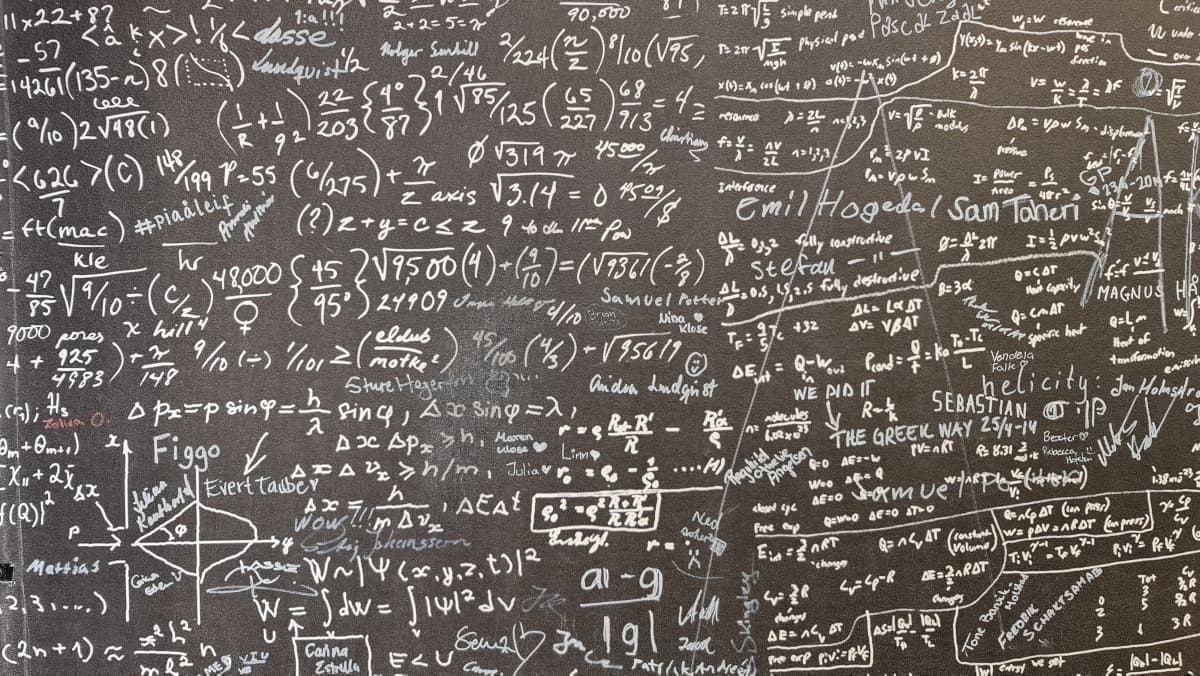
Since the beginning of time, mathematicians have been driven to unlock the mysteries of our world and to understand the complexities around us. To do this, many have dedicated their lives to trying to solve difficult and challenging problems – some unsolved for centuries. In this blog post, we study one such field: Mathematics. We explore what are some of its most mysterious unsolved problems and delve into why these profound questions remain unanswered today.
The Riemann Hypothesis – one of the most famous unsolved problems in mathematics
The Riemann Hypothesis has captivated mathematicians for over a century. It is one of the most famous unsolved mathematical problems, and solving it could revolutionize our understanding of prime numbers. Proposed by the German mathematician Bernhard Riemann in 1859, the hypothesis relates to the distribution of prime numbers. Despite the best efforts of some of the greatest minds in mathematics, the proof of this tantalizing conjecture has proved elusive. However, the challenge of solving such a difficult problem has driven mathematical research and inspired new developments in the field. Mathematicians continue to work tirelessly to unravel the secrets of the Riemann Hypothesis, and who knows – maybe someday we will finally unlock its mysteries.
Goldbach’s Conjecture – a conjecture that every even number can be written as the sum of two prime numbers
Goldbach’s Conjecture, proposed by Christian Goldbach in 1742, remains one of the most intriguing and well-known unsolved problems in number theory. The conjecture states that every even number greater than two can be expressed as the sum of two prime numbers. In other words, if you take any even number, no matter how large, you should be able to find two prime numbers that add up to it. Despite numerous attempts at proof, mathematicians continue to grapple with this elusive problem. Some have come close, while others remain convinced that the conjecture is false. Whatever the case may be, there’s no denying that Goldbach’s Conjecture has captured the imagination of mathematicians and laypeople alike for more than two centuries.
Collatz Conjecture – a conjecture involving an iterative process on positive integers
The Collatz Conjecture, also known as the 3n+1 problem, has been a topic of mathematical fascination for decades. The conjecture involves an iterative process on positive integers, where if the integer is even, it is divided by two, and if it is odd, it is multiplied by three and then one is added. The question is whether this process will always eventually reach the number 1, no matter what positive integer is chosen to start with. Despite numerous attempts to prove or disprove the conjecture, it remains unsolved to this day. The mystery surrounding the Collatz Conjecture continues to captivate mathematicians and enthusiasts alike, as they seek to unravel the secrets hidden within its seemingly simple steps.
Hodge Conjecture – a conjecture about the Hodge structure of algebraic varieties
The Hodge Conjecture is a fascinating puzzle in mathematics that has baffled experts for decades. At its core, it seeks to understand the intricate relationships between algebraic geometry and complex analysis, two seemingly unrelated fields of study. While progress has been made in recent years to shed further light on this conjecture, many questions still remain unanswered. In fact, the Hodge Conjecture is considered to be one of the most important unsolved problems in modern mathematics. Its implications could have far-reaching consequences, not only in the realm of algebraic varieties but in areas such as theoretical physics as well. As mathematicians continue to unravel its complexities, we can only marvel at the beauty of this mysterious and elusive problem.
P versus NP Problem – a famous problem in computer science related to the complexity of algorithms
The P versus NP problem is one of the most intriguing and difficult puzzles in computer science. It asks whether or not certain problems can be solved quickly by a computer. On the one hand, there are problems that can be solved in what’s called P time – polynomial time – which means the complexity of the algorithm grows at a manageable rate as the size of the input increases. On the other hand, there are problems that may not be solvable in P time, but if they were, it would be impossible for hackers to break into bank accounts or decipher top-secret messages. That’s where the NP problems come in. These problems appear to be too hard to solve quickly, but the solutions can be checked efficiently. The P versus NP problem may very well be the key to unlocking some of the most pressing and important computer security challenges we face today.
Twin Prime Conjecture – a conjecture that there are infinitely many pairs of prime numbers that differ by 2
Mathematicians have been fascinated by prime numbers for centuries. They are the building blocks of all numbers, and their unique properties have puzzled scholars for ages. One of the most intriguing concepts related to prime numbers is the Twin Prime Conjecture. This conjecture suggests that there are infinitely many pairs of prime numbers that differ by two. The idea is simple to comprehend, but proving it has been a challenge for mathematicians throughout history. Despite attempts to find a counterexample, the conjecture remains unproven. Nevertheless, the search for proof continues, and it is a fascinating topic for anyone who loves numbers and the mysteries they hold.
Conclusion
These six remarkable unsolved problems in mathematics, the Riemann Hypothesis, Goldbach’s Conjecture, Collatz Conjecture, Hodge Conjecture, P versus NP Problem, and Twin Prime Conjecture are some of the greatest unsolved puzzles in both math and computer science. As each one has remained unsolved for more than 50 years now without a breakthrough insight as yet, it is no wonder why they are being talked about and researched until this day. Those who do succeed in solving any of them will surely be remembered for their feat like Turing and Gödel were known for their respective discoveries. Ultimately though it comes down to the curiosity that drives mathematicians around the globe to persevere through these puzzles and the intricate web that surrounds them leading up to a possible Eureka moment!
